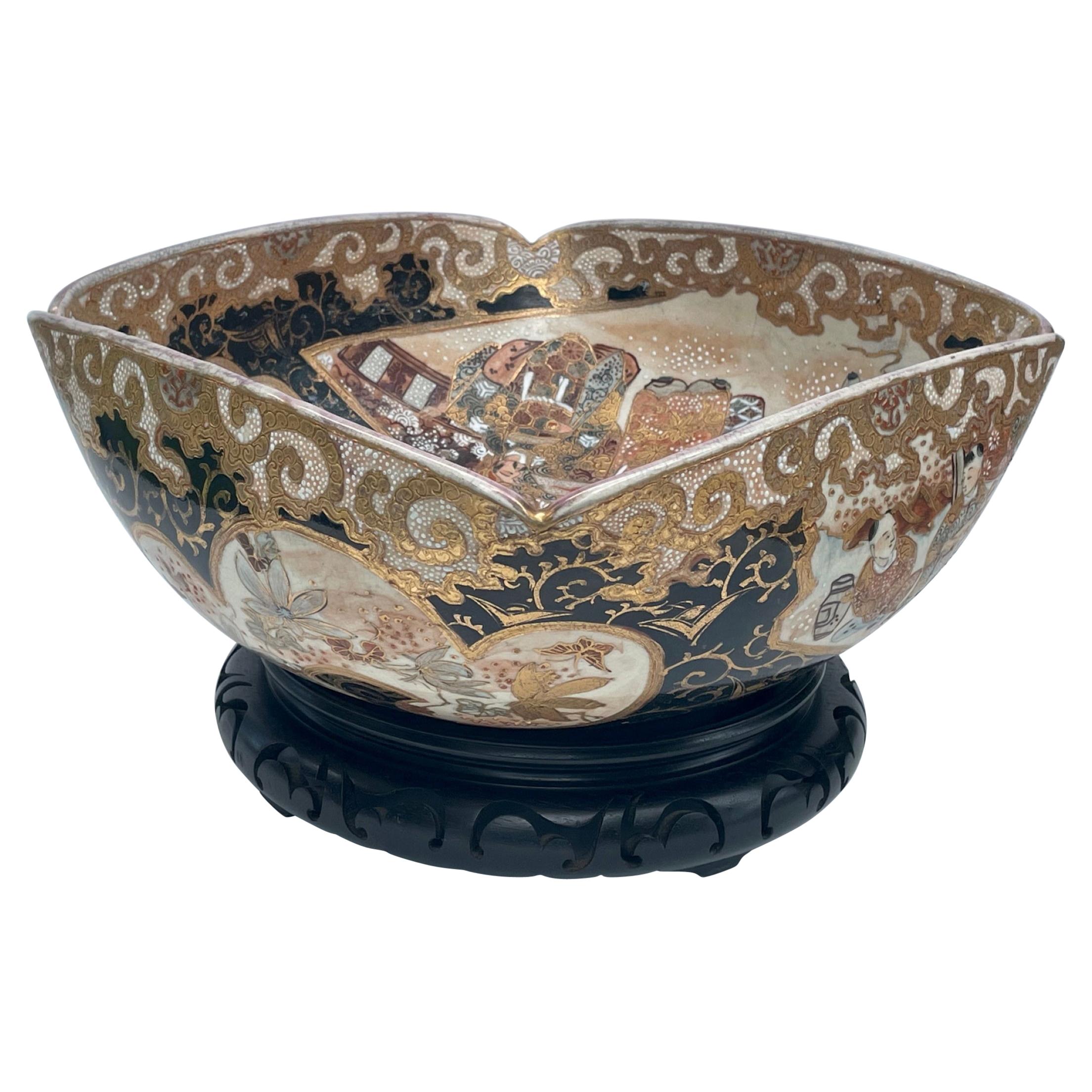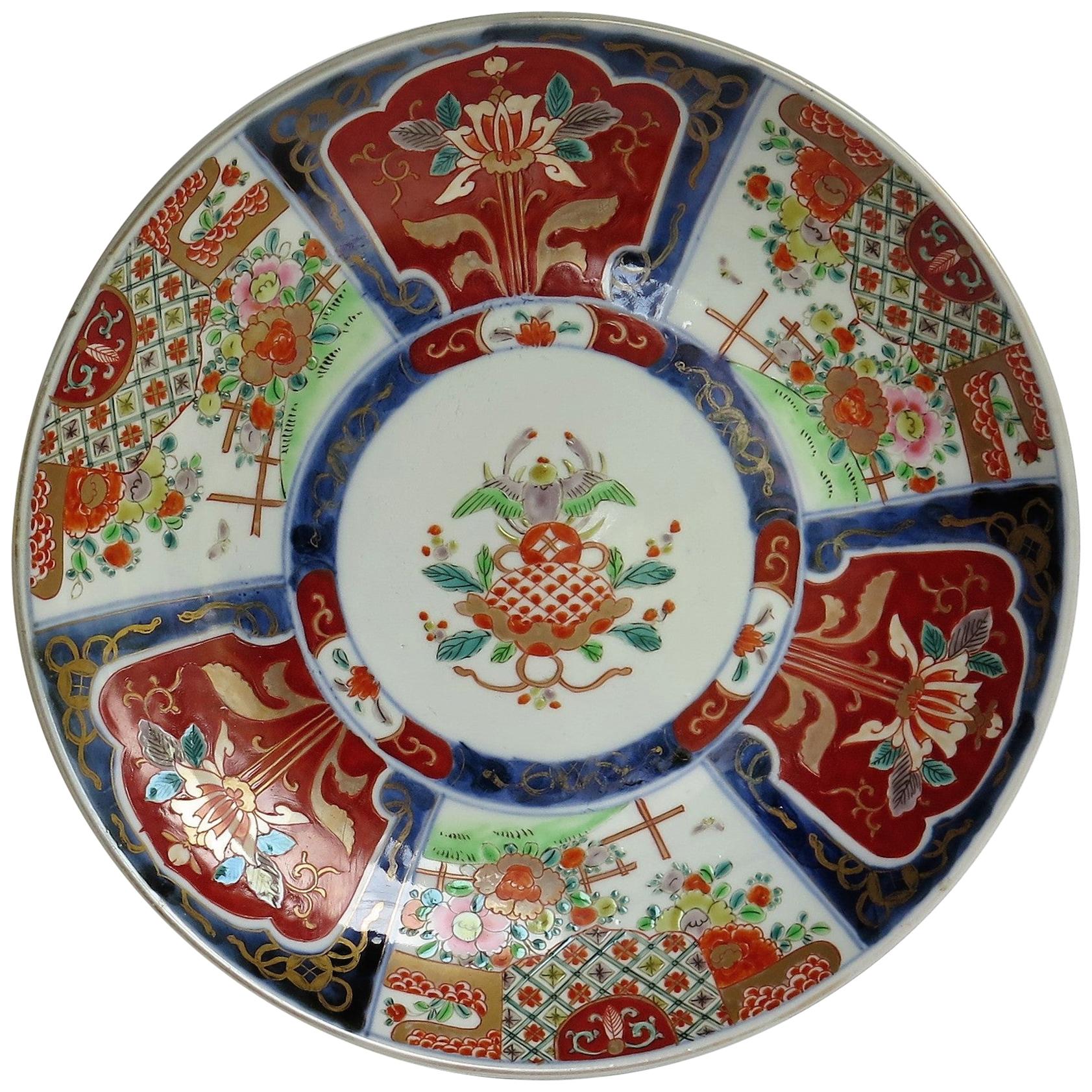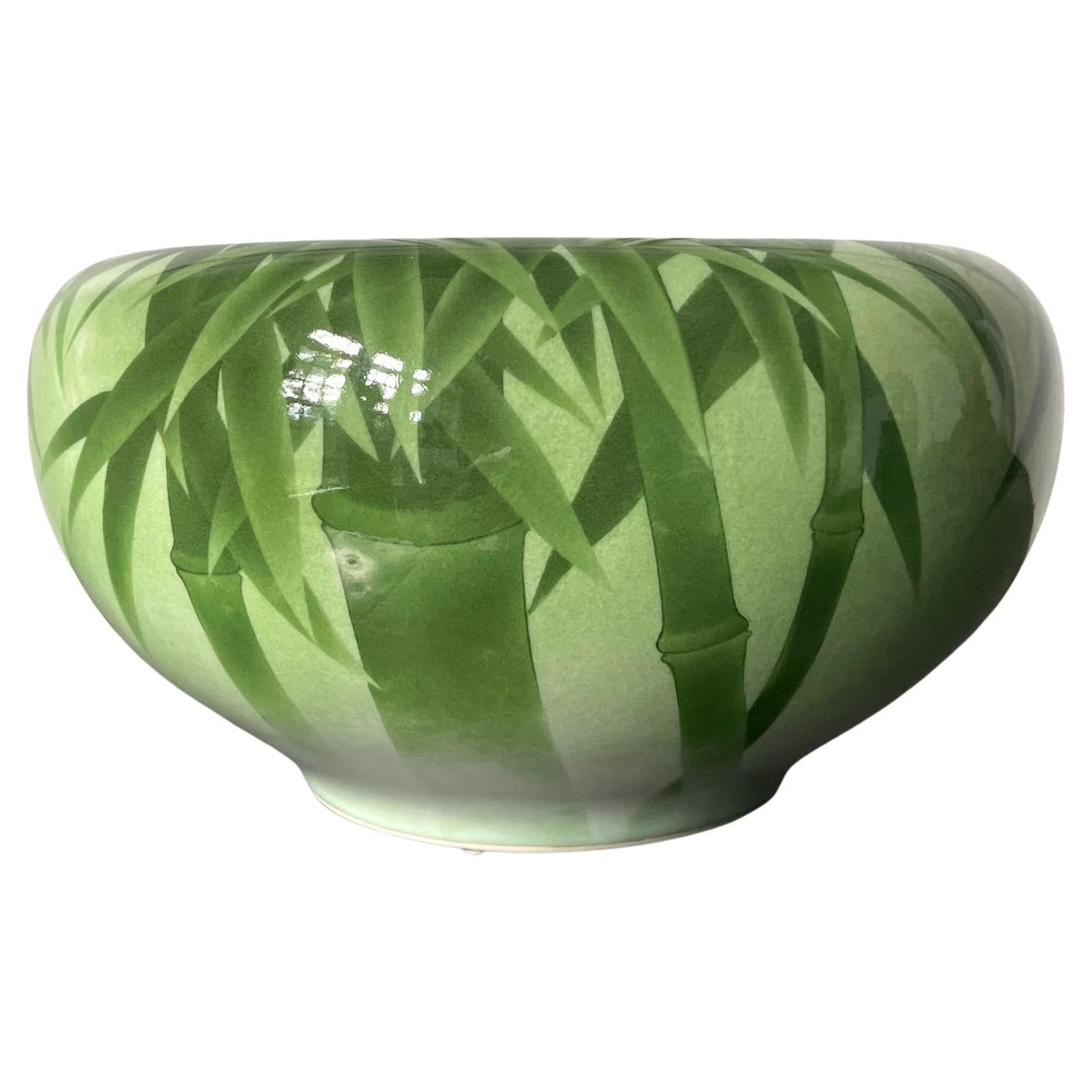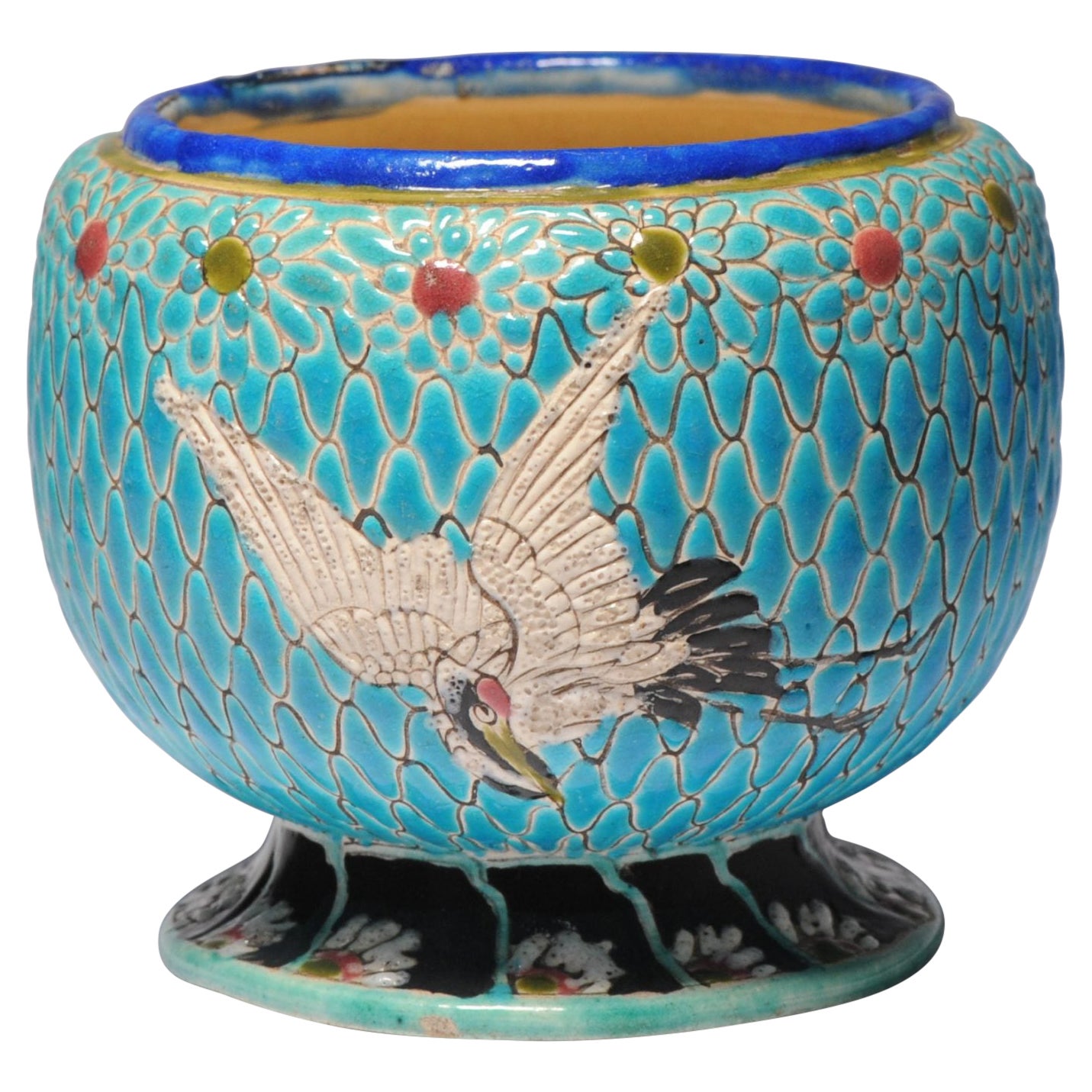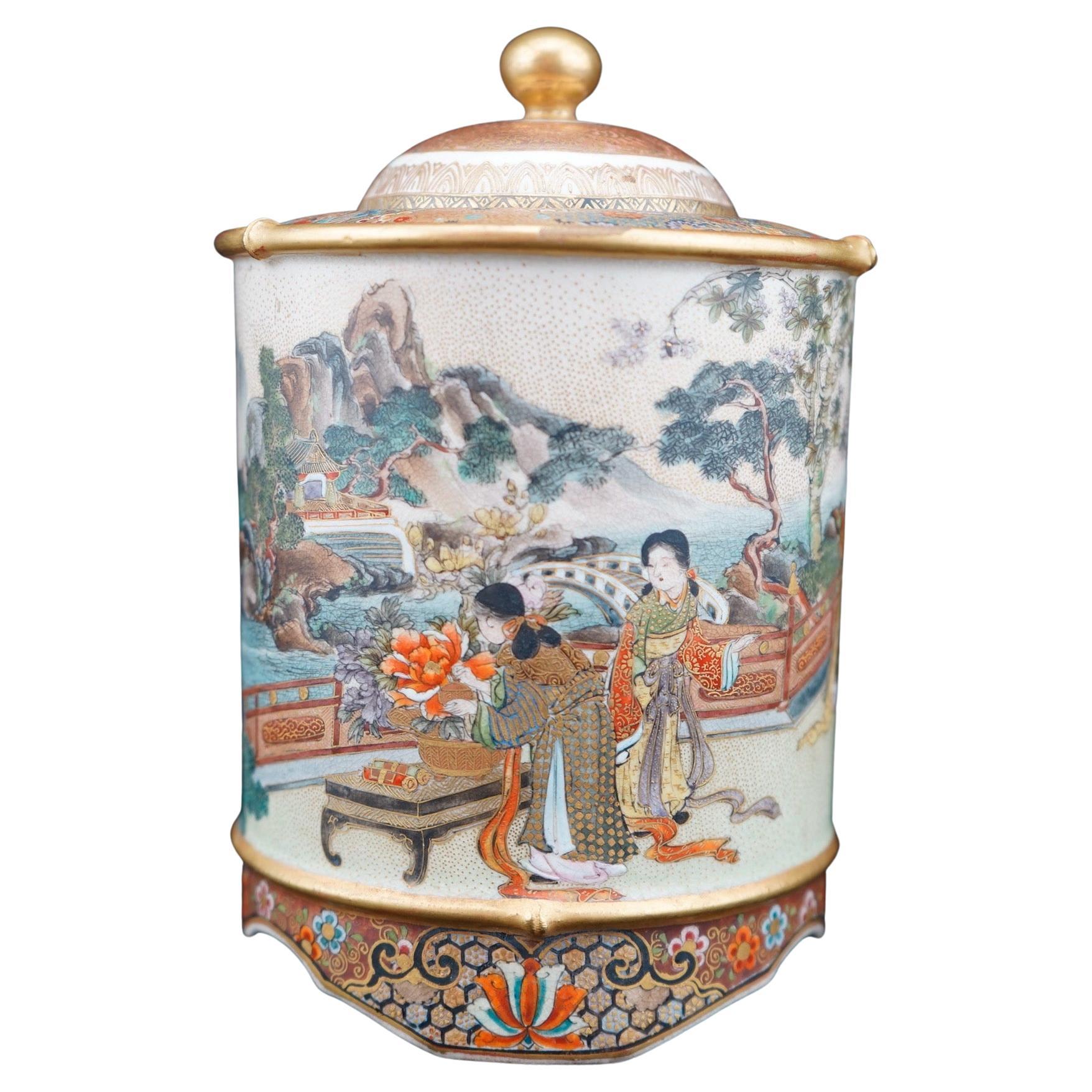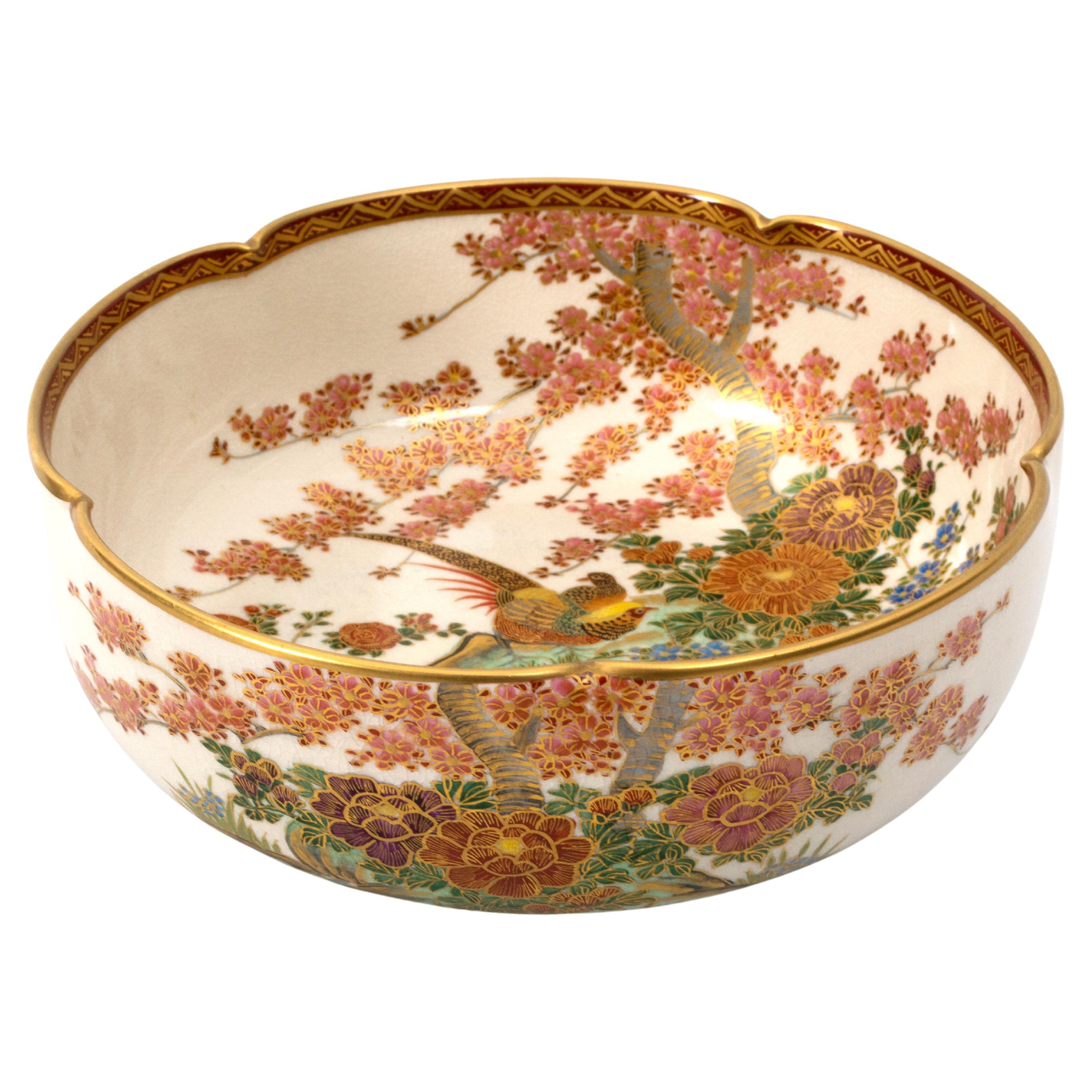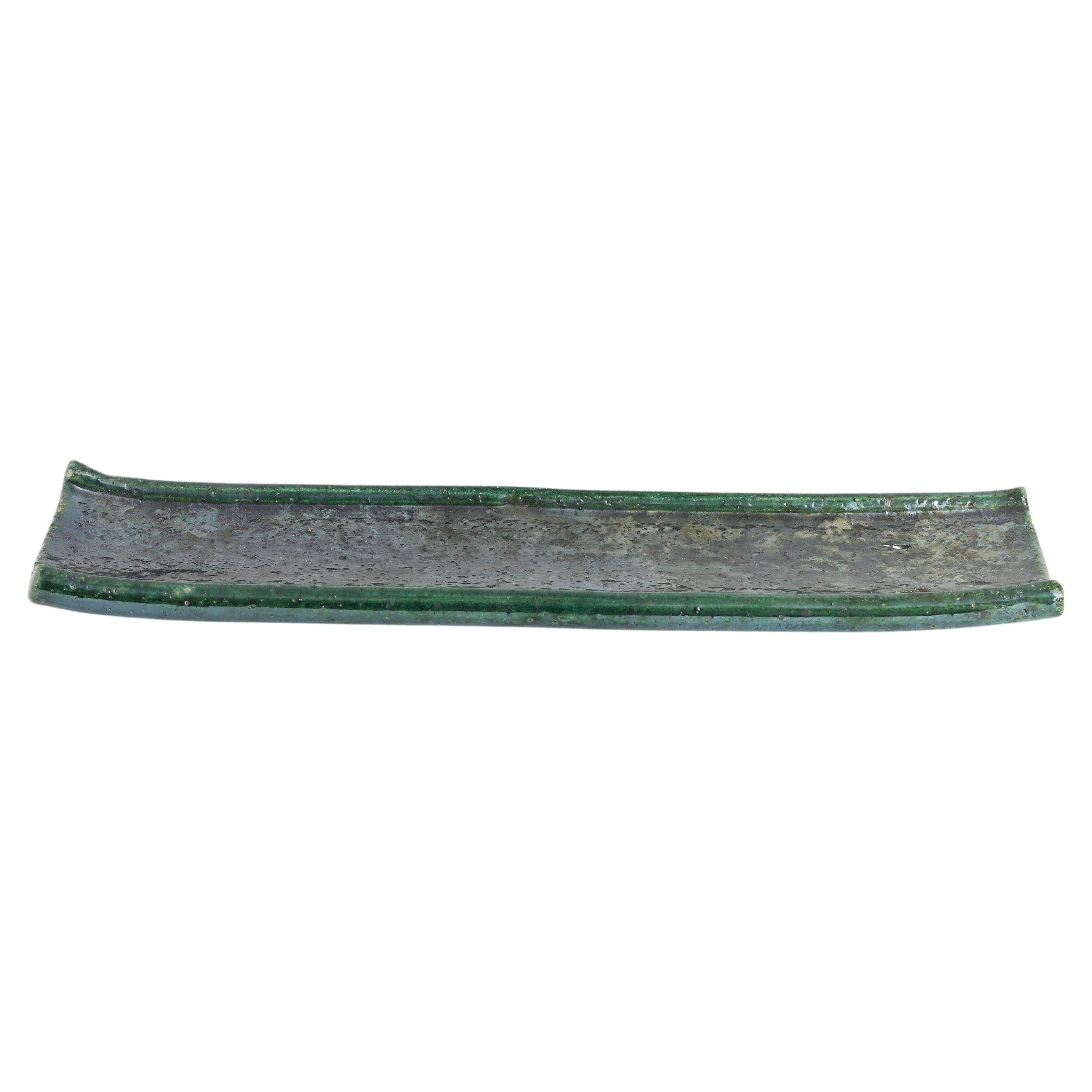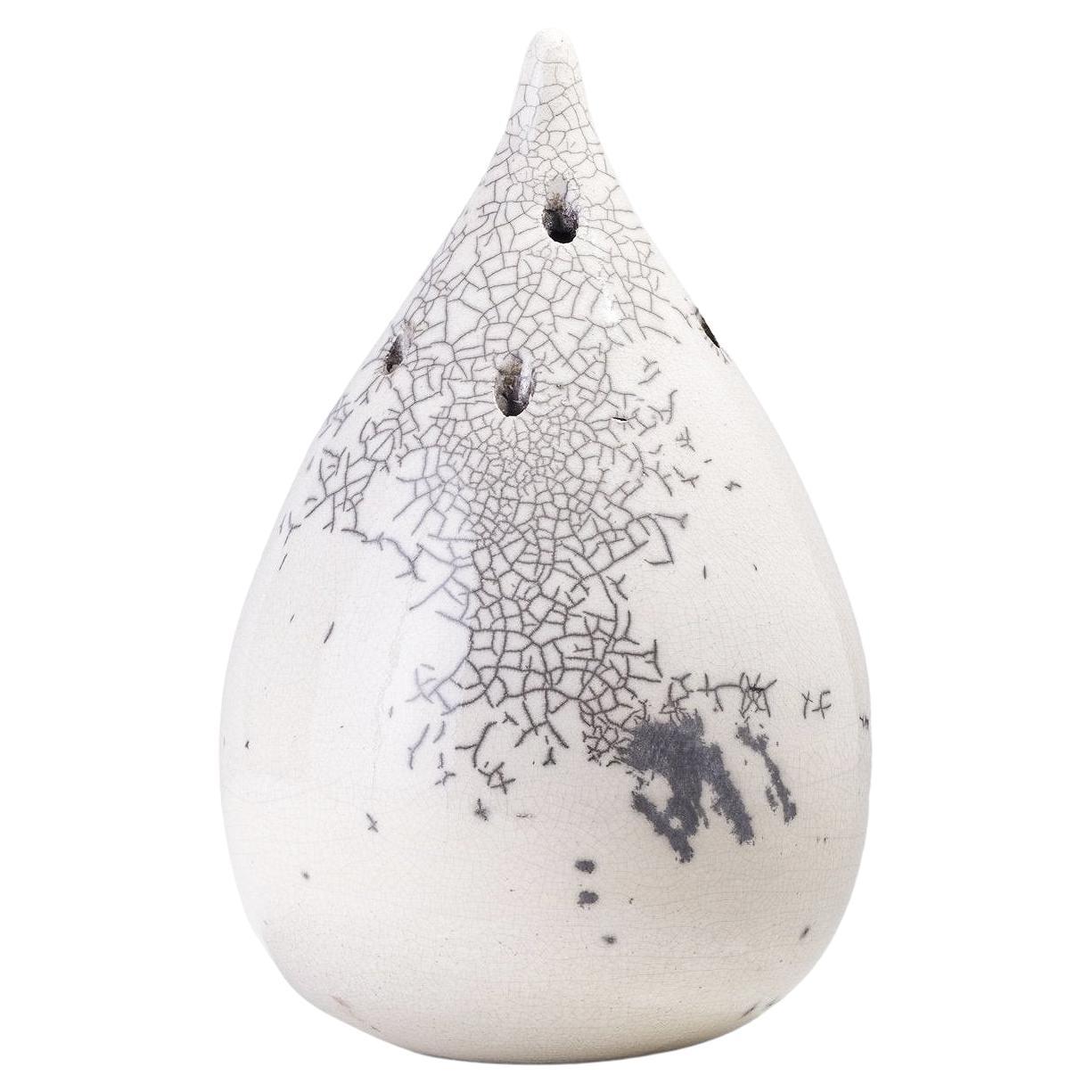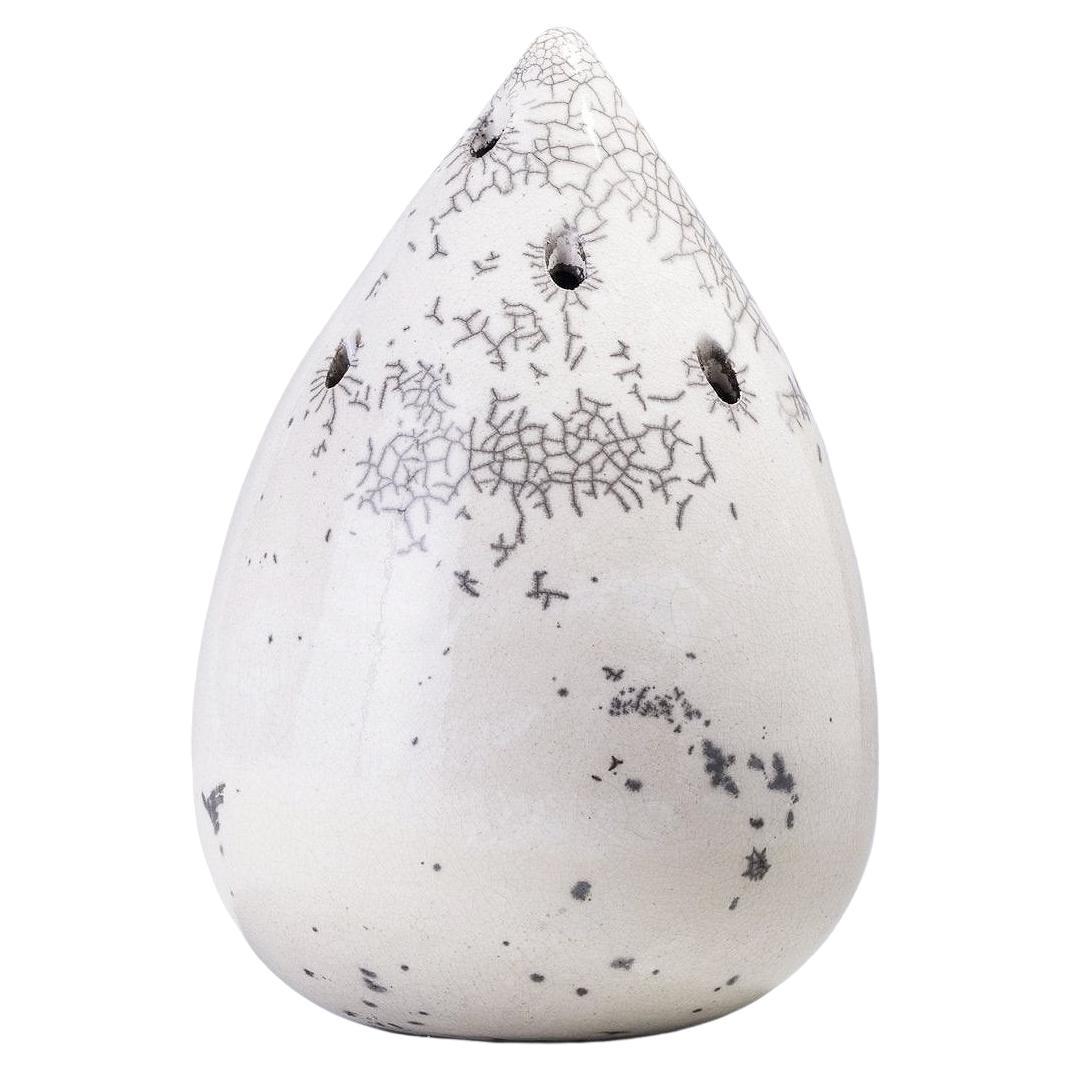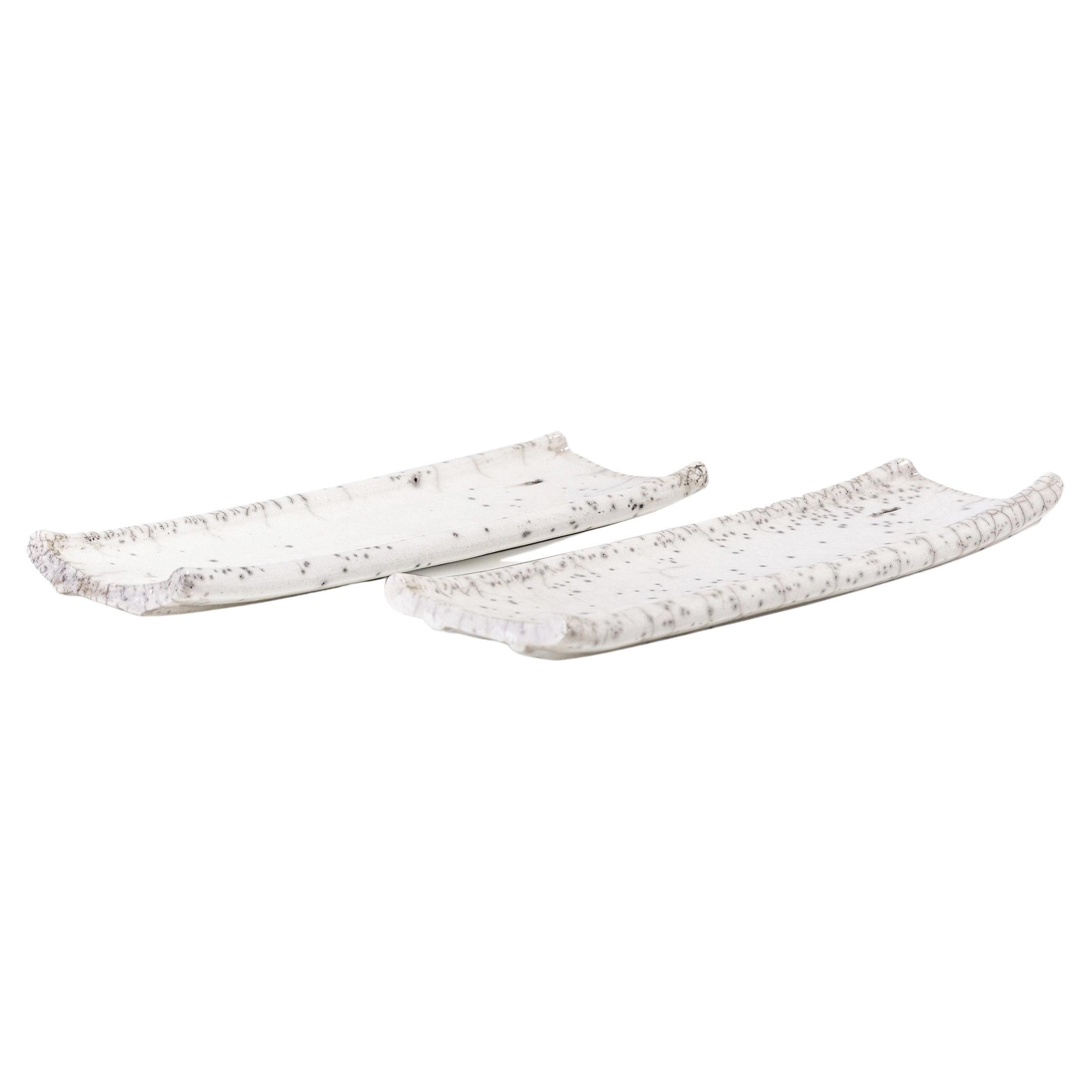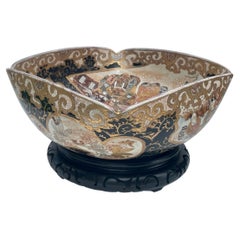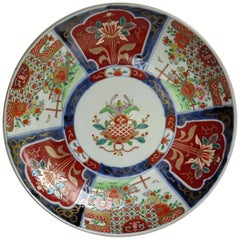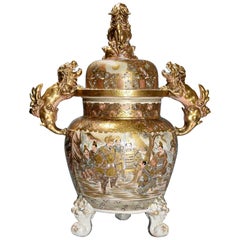
Superb Meiji Period Large Japanese Satsuma Koro or Incense Burner
View Similar Items
1 of 10
Superb Meiji Period Large Japanese Satsuma Koro or Incense Burner
About the Item
- Dimensions:Height: 27.5 in (69.85 cm)Width: 22 in (55.88 cm)Depth: 13.5 in (34.29 cm)
- Style:Meiji (Of the Period)
- Materials and Techniques:
- Place of Origin:
- Period:
- Date of Manufacture:1890
- Condition:Wear consistent with age and use.
- Seller Location:Suffolk, GB
- Reference Number:Seller: LVS10141stDibs: LU1049010597421
You May Also Like
- Japanese Meiji Period Satsuma Large Square Bowl CenterpieceBy SatsumaLocated in Vero Beach, FLJapanese Meiji Period Satsuma large square bowl Antique early Meiji Period 15" square with scalloped rim Satsuma bowl. Highly unusual and finely painted. ...Category
Antique 19th Century Japanese Meiji Ceramics
MaterialsCeramic
- Pair of Meiji Period Satsuma Earthenware VasesLocated in Lymington, HampshireA pair of Meiji period Satsuma earthenware vases, each with applied elephant-mask handles, painted in overglaze pastel enamels and gilt with a continuous central frieze of sages and ...Category
Antique 1880s Japanese Meiji Ceramics
MaterialsEarthenware
- Japanese Porcelain Charger finely Hand Painted, Meiji Period circa 1880Located in Lincoln, LincolnshireThis is a good quality, hand decorated Japanese porcelain charger, large plate or bowl with an Imari pattern, dating to the late 19th centur...Category
Antique Late 19th Century Japanese Meiji Ceramics
MaterialsPorcelain
- Japanese Ceramic Centerpiece Bowl Makuzu Kozan Meiji PeriodBy Makuzu KozanLocated in Atlanta, GAA beautiful ceramic vessel in the form of Bo, the so-called monk's alms bowl from the studio of Japanese Potter Makuzu Kozan, also known as Miyagawa Kozan (1842–1916), one of the most established and collected ceramist from Meiji Period. Born as Miyagawa Toranosuke, Kozan established his pottery studio in Yokohama circa 1870s and later became one of the appointed artists to the Japanese Imperial household. His work was exhibited in many international fairs that the Meiji government participated at the turn of the century and won many grand prizes. Of a relatively large size, this piece was made as a decorative center piece for display. It was brilliantly decorated with underglaze paint of a green-on-green bamboo motif, using the novel technique developed by Kozan called Fuki-e (the blow painting). As a result, the bamboos appear took on a three-dimensional quality as if appearing in a mist. Known as one of the most creative ceramists, circa 1887, Kozan started experimenting with new chemical colors from the West in the format of his porcelain glaze. New colors allowed him to create underglaze design that appeared bright, smooth and glossy. To create design that is realistic and dimensional, more common in the western paintings, he was inspired by the native Japanese ink painting technique developed around 1900 by Yokoyama Taikan...Category
Antique Early 1900s Japanese Japonisme Ceramics
MaterialsCeramic
- Antique 19C Japanese Turqoise Satsuma Water Pot or Koro Marked BaseLocated in Amsterdam, Noord HollandA Japanese Satsuma water pot, Meiji period. With cranes and flowers. Marked on base. Condition / Overall Condition 2 chips to base rim and some very minimal fritting to upper ri...Category
Antique 19th Century Japanese Meiji Ceramics
MaterialsPorcelain
- Rare Meissen Marcolini Porcelain Chinoiserie Incense Burner Vase and CoverBy Meissen PorcelainLocated in New York, NYA rare Meissen Marcolini Porcelain Chinoiserie incense burner vase and cover, made for the Chinese market, circa 1800, blue cross swords and star mark, Pressnummer 58 A Museum Quality Piece. Painted in the sought after famille rose palette with sprigs of indianische Blumen and enriched in gilding, the simulated pierced body supported by four feet painted with stylized dragons, the pierced cover with a Buddhist lion finial. 10" high x 6" wide x 6" deep The shape of this piece, which appears to be unrecorded in the literature, is inspired by similar Chinese porcelain censers from the Qing Dynasty, Kangxi Period (1654-1722). An example in the Palace Museum, Beijing, is illustrated by Li Yi-hua in Qing Porcelain of Kangxi, Yongzheng and Qianlong Periods from the Palace Museum Collection, Hong Kong, 1989, pl. 65. Another in the British Museum, London (museum no. PDF, A.812) is catalogued as a perfume-holder. These porcelain examples are in turn inspired by ancient Chinese bronzes from both the Shang (1600-1046 BC) and the Zhou (1046-246 BCE) dynasties, an example of which was sold anonymously by Christie's New York, 22 March 2019, lot 1601. This chain of inspiration tracking backwards from the 19th century to antiquity provides a clear example of how ceramics, and indeed other mediums, are able to influence and motivate the works of later generations. For a Meissen porcelain snuff...Category
Antique Late 18th Century German Chinoiserie Ceramics
MaterialsPorcelain
Recently Viewed
View AllMore Ways To Browse
Incense Burner Silver
Meiji Lion
Lion Incense Burner
Silver Koro
Japanese Koro Silver
Satsuma Koro
Satsuma Incense
Satsuma Incense Burner
Satsuma Japanese Incense Burner
Japanese Incense Burn
Modern Scandinavian Ceramics
Studio Ceramics
Ceramic Plater
Ceramic Plates
Europe Ceramics
Swedish Silver Silver
Sweden Silver
Silver Sweden Swedish
